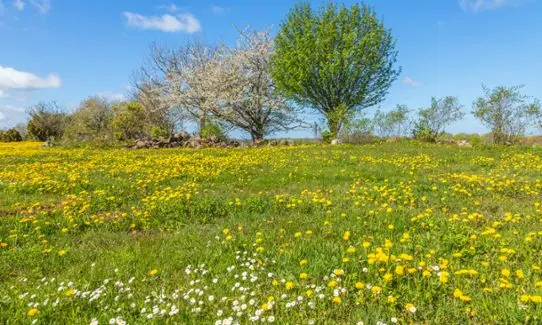Earlier spring peak of ground level ozone positive for vegetation
Changes in levels of ground level ozone have been analysed by researchers in a multi-year research programme. They can now ascertain that there is a trend towards a narrower overlap between the year’s maximal level of ground level ozone and the early growth period, which is positive.
Ground level ozone is an example of an air pollutant that affects vegetation negatively, both for natural ecosystems and agricultural crops, as well as human health. Ground level ozone is formed in polluted air by the presence of sunlight. In Sweden the levels of ground level ozone are often higher in the countryside than in cities. The levels are highest during the spring.

The growth season has shifted and now starts earlier, even if it varies from year to year. But the spring peak for ground level ozone has shifted more, and now occurs before the start of the growth period.
Earlier spring peak for ground level ozone
Researchers have analysed how the levels of ground level ozone have changed in Sweden since the beginning of the 1990s. During the 1990s emissions increased in Asia, which led to an increase in the ground level ozone over the whole year. Researchers can now ascertain that the spring peak of ground level ozone now occurs earlier. The changes are greatest in northern Sweden. One reason for this is that pollutant emissions in Europe have reduced, so that the volume of air pollutants transported by the wind to Sweden has decreased. At the same time the climate has changed and the snow season has become shorter.
Earlier start for the growth period
Since the ground level ozone has a negative effect on vegetation, the researchers have also investigated how the growth season has changed. The change in climate and shorter snow season means that vegetation starts to grow earlier in the spring. This change is most significant in Norrland, Sweden’s northernmost region.
“We can see that the growth season has shifted and now starts earlier, even if it varies from year to year. This is particularly noticeable in northern Sweden,” says Camilla Andersson, researcher at SMHI and one of the two researchers leading this work.
“But the spring peak for ground level ozone has shifted more, and now occurs before the start of the growth period,” says Camilla Andersson.
Studies of the ozone flow to vegetation are needed
Researchers have also noted that the warm and dry summer of 2018 contributed to elevated ozone levels in southern Sweden.
“In order to investigate how the actual total exposure has changed, we need to carry out further studies to calculate how the ozone flow to vegetation has been affected, the so-called PODY,” explains Camilla Andersson.
The research on changes in ground level ozone and the growth period has been carried out through SCAC (Swedish Clean Air and Climate Research Program) financed by the Swedish Environmental Protection Agency. The work package for ozone and vegetation is led by SMHI and IVL Swedish Environmental Research Institute, and also includes researchers from Gothenburg Botanical Garden and Gothenburg University.

